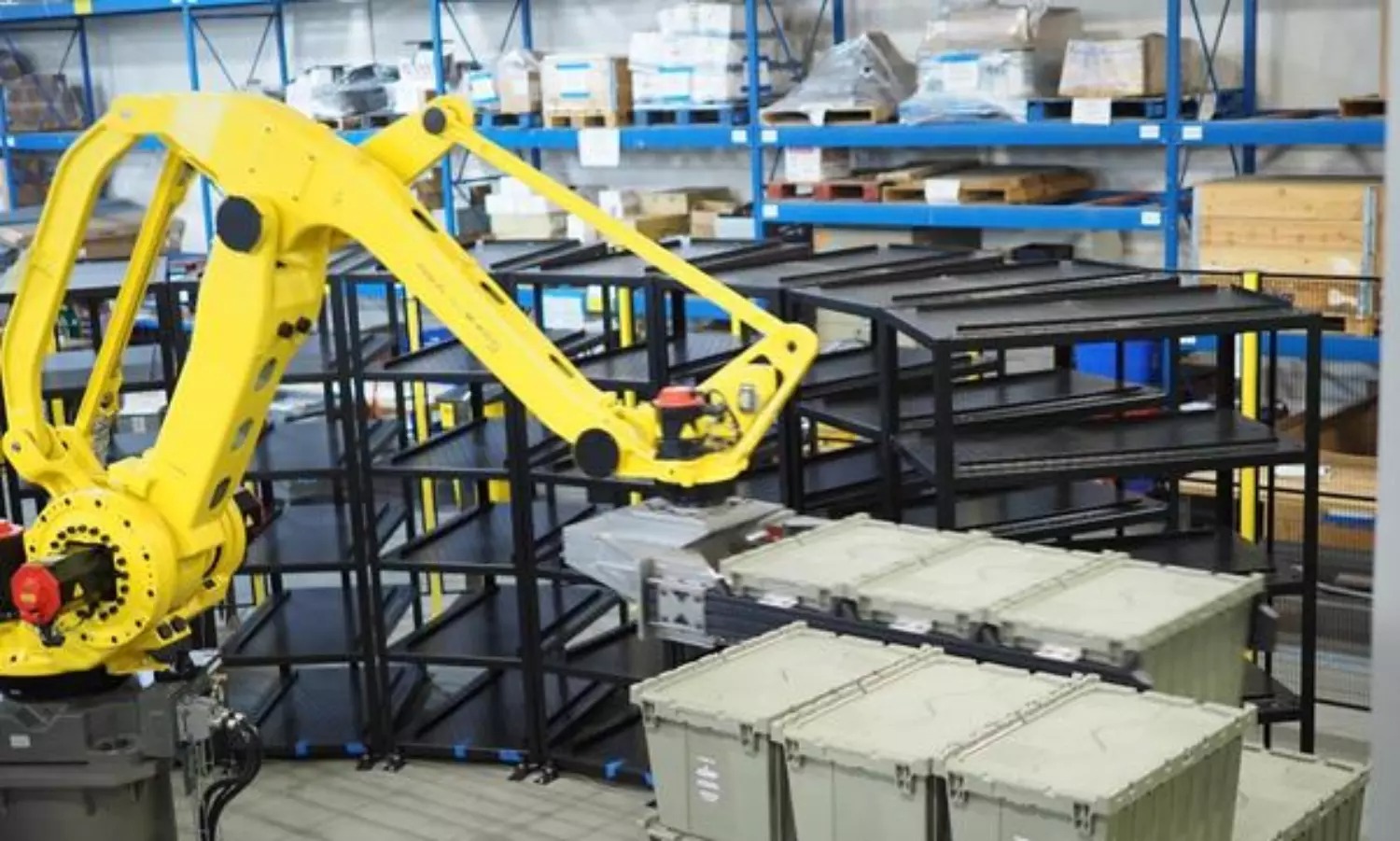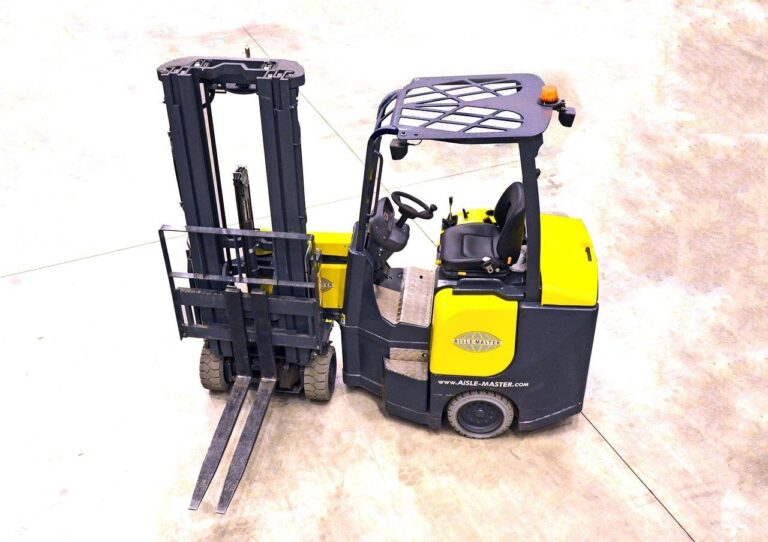Optimizing Efficiency with Material Handling Equipment
In today’s fast-paced industrial environment, the movement, storage, and control of materials have become essential to maintaining productivity and ensuring safety. Regardless of the industry—whether manufacturing, warehousing, distribution, or construction—Material Handling Equipment is indispensable. With advancements in technology, the design and functionality of these systems continue to evolve, providing companies with opportunities to streamline operations, reduce costs, and increase overall efficiency.
One of the key players in the material handling industry is Tri-Lift Industries, a company renowned for its innovative solutions that cater to a wide array of industries. By understanding the importance of Material Handling Equipment, how it operates, and the key considerations for selecting the right equipment, businesses can maximize operational success.
What is Material Handling Equipment?
Material Handling Equipment refers to various tools, devices, and machinery used to transport, store, control, and protect materials throughout their lifecycle. These materials can be raw goods, components, semi-finished products, or finished goods. Equipment designed for material handling can range from simple manual tools, like hand trucks and pallet jacks, to complex automated systems, such as conveyor belts and robotic arms.
The main goal of this equipment is to improve efficiency, safety, and productivity in operations. In warehouses and distribution centers, for example, Material Handling Equipment is used to move products from one point to another, ensuring a smooth flow of goods throughout the facility.
There are four general types of material handling systems:
- Storage Systems: These systems hold materials for easy access, such as shelving, racks, and bins.
- Transport Systems: These systems move materials from one location to another within a facility, including conveyor systems, forklifts, and automated guided vehicles (AGVs).
- Unit Load Systems: Equipment such as palletizers and containers designed to hold products securely during transport.
- Bulk Handling Equipment: Systems designed to handle bulk materials like liquids, powders, and grains, such as hoppers and silos.
By investing in high-quality equipment, businesses can maintain an efficient supply chain, improve throughput, and reduce downtime.
Why is Material Handling Equipment Important?
Material handling is a crucial component in any business that involves the movement of goods. Proper equipment ensures that materials are moved in a timely, safe, and cost-effective manner. Below are some of the key reasons why Material Handling Equipment is so important for industries:
1. Improved Productivity
When materials are moved manually, the time spent transporting goods can severely slow down operations. Automated equipment and advanced material handling systems can speed up processes significantly. For example, automated conveyor systems can move products quickly from one part of a factory to another, reducing human labor and increasing throughput.
2. Reduced Workplace Injuries
The physical strain of moving heavy materials increases the risk of workplace injuries. Forklifts, hoists, and other material handling systems help reduce the need for manual lifting and heavy lifting tasks, thereby enhancing employee safety. This also lowers insurance costs and minimizes the time lost due to worker injuries.
3. Space Optimization
By using Material Handling Equipment designed for efficient storage, businesses can make better use of their available space. High-density storage systems such as shelving and racking allow materials to be stored more compactly, making use of vertical space and freeing up floor areas for other operations.
4. Lower Operational Costs
Although the initial investment in equipment might seem significant, it ultimately saves money by reducing labor costs, increasing the speed of operations, and minimizing product damage. With proper maintenance, Material Handling Equipment can last for years, making it a wise long-term investment.
5. Enhanced Inventory Control
With automated material handling systems, businesses can integrate their equipment with inventory management software, allowing real-time tracking of goods. This reduces the risk of stockouts, overstocking, and inventory inaccuracies, leading to more informed decision-making.
Types of Material Handling Equipment
The type of Material Handling Equipment a business requires depends largely on its industry and specific needs. Below are some of the most commonly used equipment:
1. Forklifts
Forklifts are among the most versatile and widely used types of Material Handling Equipment. They are primarily used to lift and move heavy materials over short distances. From lifting pallets to stacking goods in a warehouse, forklifts are essential for a wide variety of tasks.
2. Conveyors
Conveyor belts are essential for moving materials along production lines or between different parts of a facility. They are particularly useful in industries like manufacturing, where large quantities of products must be transported across long distances within a facility.
3. Pallet Jacks
Pallet jacks are smaller and more maneuverable than forklifts, making them ideal for handling smaller loads in tight spaces. They are often used for moving pallets of goods from one location to another, especially in warehouses and distribution centers.
4. Automated Guided Vehicles (AGVs)
AGVs are self-driving machines used to transport materials throughout a facility. They are equipped with sensors that allow them to follow predefined routes or use advanced technologies like magnetic strips or cameras to navigate around obstacles.
5. Robotic Arms
In automated settings, robotic arms are used to pick, place, or package products. These systems increase efficiency, reduce human error, and can perform repetitive tasks with high precision.
6. Hoists and Cranes
Hoists and cranes are used in industries such as construction and manufacturing to lift heavy objects. They are particularly useful for moving large, bulky materials that would be impossible to handle manually.
Benefits of Investing in Material Handling Equipment
When businesses choose the right Material Handling Equipment, they open the door to a wide array of benefits, from reducing operational costs to improving product quality and increasing overall productivity.
1. Enhanced Efficiency
Automated material handling systems and high-quality equipment can perform repetitive tasks much faster than humans, allowing businesses to complete jobs more quickly. Tasks that used to take hours can now be completed in minutes.
2. Cost Savings
By reducing the need for manual labor and preventing injuries, businesses can save money in the long run. In addition, investing in durable equipment can help reduce the risk of equipment breakdowns and costly repairs.
3. Greater Flexibility
Many modern material handling systems are designed to be scalable and flexible, meaning that businesses can adjust their systems as their needs evolve. This is particularly important in industries where demand fluctuates and product types change frequently.
4. Increased Safety
With safer equipment comes a safer workplace. Material Handling Equipment reduces the physical demands on workers and minimizes the risk of workplace injuries. Companies like Tri-Lift Industries offer state-of-the-art equipment with safety features that meet or exceed industry standards, ensuring that workers are well-protected.
5. Improved Accuracy
Automated systems are less prone to human error, leading to fewer mistakes in product handling, shipping, and inventory management. This results in improved customer satisfaction and fewer costly errors.
Choosing the Right Material Handling Equipment
Selecting the right Material Handling Equipment for your business involves several factors, including the type of materials being handled, the layout of your facility, and your operational goals.
1. Understand Your Material Needs
The first step in choosing the right equipment is to understand the type of materials you’ll be handling. For example, bulky materials may require cranes or hoists, while smaller items can be moved using conveyor belts or pallet jacks.
2. Consider Space Constraints
The layout of your facility plays a significant role in determining which equipment will work best. Narrow aisles may require specialized forklifts or pallet trucks, while larger areas may benefit from conveyor systems and automated machines.
3. Evaluate Throughput Requirements
The speed at which materials need to be moved also affects equipment selection. High-volume facilities may benefit from automated solutions like robotic arms or AGVs, while smaller businesses may prefer manual solutions like forklifts or hand trucks.
4. Plan for Maintenance and Support
A critical aspect of owning Material Handling Equipment is ensuring that it’s well-maintained. Partnering with a reliable provider like Tri-Lift Industries, which offers maintenance and support services, ensures that equipment stays in top condition and minimizes downtime.
The Future of Material Handling
The future of Material Handling Equipment lies in automation, data integration, and sustainability. Companies are increasingly integrating advanced technologies like artificial intelligence (AI), the Internet of Things (IoT), and machine learning to improve their systems.
Automation will continue to play a pivotal role in material handling, with robots and autonomous vehicles taking over more tasks. Additionally, real-time data collection will allow businesses to monitor performance and predict maintenance needs, resulting in a more efficient and cost-effective operation.
Conclusion
Material handling is a crucial part of any operation that involves the movement of goods, whether in manufacturing, warehousing, or construction. The right equipment can make a significant difference in operational efficiency, safety, and overall profitability. By investing in the latest technology and working with trusted companies like Tri-Lift Industries, Inc, businesses can ensure that their material handling systems meet the demands of the modern market and continue to provide a solid return on investment.






